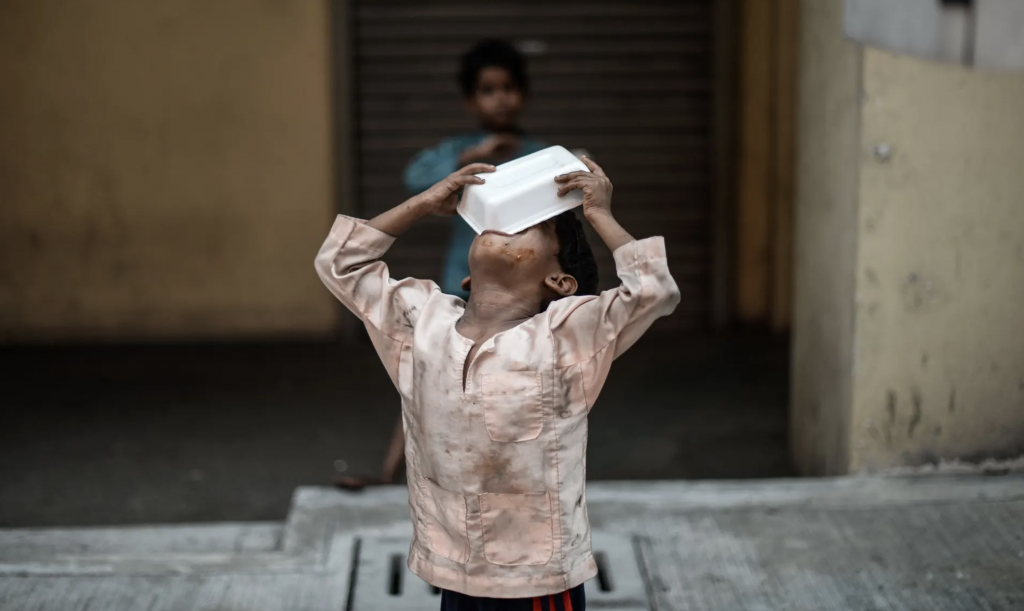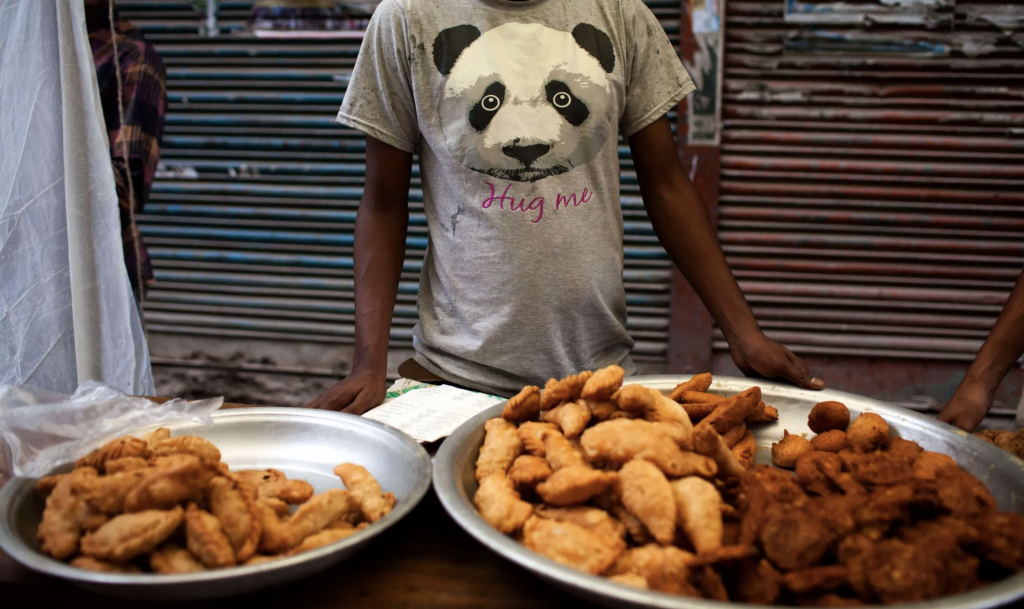When we think about developing countries and nutrition, a picture of a malnourished child immediately jumps into our heads.
Ironically, there is a global epidemic of overweight and obesity that coexists with undernutrition. One third of the entire population is either overweight or obese, and, 62 percent of these individuals are living in developing countries.
This rising trend is particularly seen in children and adolescents which, for the most part, puts them at a greater risk for physical health and psychological effects.
But why is obesity rising in developing countries in the first place?
The World Health Organization suggests that every aspect of the environment in which children are conceived, born, and raised can contribute to their risk of becoming overweight. In developing countries, some of the determinants of health include: physical activity, dietary changes, socioeconomic status, sociocultural factors, and schooling. Furthermore, in third world countries, although higher obesity rates are concentrated in high income neighborhoods, children of lower social status are also beginning to show higher rates of obesity, and there are various determinants to account for the rise in child obesity rates in both of these groups.
As low income countries continue to develop, many changes are occurring. Dietary changes in these parts of the world are one of the most concerning factors that contribute to the rise in obesity for both high and low income children. The main reason behind this change in food preferences come from a rise in food prices and continuous advertisements.
According to the Journal of Endocrine Reviews, relatively low cost, energy-dense foods are becoming increasingly popular, and feeding infants high-fat or high-sugar foods such as fries or sodas, are a decisive contributor to childhood obesity. For example, the Oxford Academics Nutrition Reviews Journal says that prices for basic grains have doubled or tripled in various developing countries. If families don’t have access to fair priced healthy foods, there won’t be a variety of food for children to choose from. While unhealthy foods are getting cheaper and more attractively tasting, both parents and children continue to prefer eating them.
Moreover, there seems to be greater access to unhealthy fast food choices surrounding schools and the school area, which is were children spend the majority of their time. According to the journal of endocrine reviews, school cafeterias and vending machines are usually stocked with cheap fast food choices and high-sugar beverages that are easy for kids to purchase. Furthermore, the school neighborhood is usually surrounded by fast food dining options and street food vendors that give students quick access to highly-processed unhealthy foods.
Schools and a kid’s family have big influence over what children choose to eat, but they lack the knowledge to tell children what they should be eating. The World Health Organization says that there is a lack of information about what it means to have a healthy diet. In fact, this is also where the sociocultural factors become a determinant. There is a lack of knowledge and various misconceptions surrounding unhealthy nutrition and its possible adverse effects. For example, some people living in African countries think of being overweight as a symbol of wealth and happiness; because of sociocultural constructions about obesity like this one, some people even strive to gain more wight by eating unhealthy foods. To counteract the lack of knowledge and misconceptions, The Nutrition Reviews say that educating children and their families about nutrition is primordial.
Shockingly, socioeconomic status within developing countries also may contribute to where obesity is concentrated. The study published in the international journal of obesity links higher education and urbanization with higher rates of obesity. Although this does not correspond with a lack of knowledge on nutrition, high-SES families give their children more money for food, and as the Endocrine Reviews research suggests, their have more western type of lifestyle. This means, children have more freedom to choose what they eat and where they eat, and they may have a more inactive lifestyle. As urbanization rises, there is fewer opportunities for physical activity. Children living in the city are less likely to be more physically active because according to the world health organization there are not as much open spaces for them to engage in healthy play.
Lack of physical activity also contributes to the rise in obesity for low-SES children. The neighborhoods where low income children are brought up in can be dangerous and lack a safe space to practice sports and engage in group physical activities. The article on Endocrine Reviews suggests that, usually, are not even safe walk or bicycle routes for kids to get to school.
Given all of these determinants, obesity has become pretty common in developing countries, and it is affecting the children living in both wealthy and low income households.
But what are the consequences of this rise in obesity? why is this even important?
Although, not every overweight child develops the possible consequences that obesity brings, previous research has shown that obesity can affect a child’s physical and mental health as well as their future health as adults.
Cardiovascular disease, diabetes, asthma, and even some types of cancers seem to be linked to obesity. These diseases can negatively impact a person’s life and decrease their life expectancy. According to Best Practice and Research, 58% of obese 5 to 10 year-olds had at least one cardiovascular risk factor. A cardiovascular risk factors can be something like hypertension or insulin resistance, which have been associated with higher obesity rates. Although these words seem daunting, all it means is that children with unhealthy diets increases their risk of being constantly sick as adults. For example, hypertension, in simple terms, is another name for high blood pressure, and eating things such as butter or canned soups can increase a person’s blood pressure, which is bad for their health.
The International Journal of Obesity also points out that the primary problem with having obesity as a child is that it increases the risk of continuing with obesity in adulthood. In fact, their research shows that the risk of developing obesity in adulthood is 3.9 to 6.5 times greater for obese than non-obese children. If kids continue to be obese as adults, they will experience even more long term health consequences. In fact, according to the Journal of Hormone Research in Pediatrics, early life obesity is a risk factor for mortality later in life. Imagine that the life of your child is not as long as it could be because of their weight and how they eat.
Furthermore, there are psychosocial consequences related to childhood obesity that affect a child’s mental health and future. The study conducted by the International Journal of Obesity says that the consequences of obesity among children are usually psychosocial, such as low self esteem, poor peer acceptance, and low participation in social and sports activities. Social isolation and stress seem to be common among overweight children especially during their adolescent years. The Journal of Family Medicine and Primary Care even say that these negative social problems can also affect their academic performance, which affects a child’s future.
All of the consequences that threaten overweight children in developing countries are a call to action for a change before the effects of obesity get to a point of no return. If the rates of obesity in children continue to rise there is a threat to the health of entire populations. If there is no change in government policy and incentives for individuals to change their dietary habits and levels of physical activity, the growth rate of obesity around the world will continue to increase.
By: D Bayas
References
Facts and figures on childhood obesity. (2019). Retrieved from https://www.who.int/end-childhood-obesity/facts/en/
Maffeis, C. & Tatò, M. (2001). Long-Term Effects of Childhood Obesity on Morbidity and Mortality. Hormone Research in Pediatrics. 55(1), 42-45. https://doi.org/10.1159/000063462
Martorell, R., Khan, L. K., Hughes, M. L., & Grummer-Strawn, L. (2000). Overweight and obesity in preschool children from developing countries. International Journal of Obesity and Related Disorders, 24(8), 959-967. http://dx.doi.org/10.1038/sj.ijo.0801264
Nidhi, G., Kashish, G., Priyali, S. & Anoop, M., (2012). Childhood Obesity in Developing Countries: Epidemiology, Determinants, and Prevention. Endocrine Reviews. 33(1), 48–70. https://doi.org/10.1210/er.2010-0028
Olufunke, A. & Kayode, O. (2013). Trends of Obesity Epidemic and its Socio-cultural Dimensions in Africa: Implications for Health Systems and Environmental Interventions. Emerging Issues in Medical Diagnosis and Treatment. 7(1), 1-8. https://pdfs.semanticscholar.org/5f8d/6ffb1327a837c909bec08d5a209adbde43eb.pdf?_ga=2.50345579.397012989.1581660189-1657725813.1579874040
Popkin, B., Adair, L. & Wen Ng, S. (2012). Global nutrition transition and the pandemic of obesity in developing countries. Nutrition Reviews. 70(1), 3–21. https://doi.org/10.1111/j.1753-4887.2011.00456.x
Reilly, J. (2005). Descriptive epidemiology and health consequences of childhood obesity. Best Practice & Research Clinical Endocrinology & Metabolism, 19(3), 327-341. https://doi.org/10.1016/j.beem.2005.04.002
Sahoo, K., Sahoo, B., Choudhury, A. K., Sofi, N. Y., Kumar, R., & Bhadoria, A. S. (2015). Childhood obesity: causes and consequences. Journal of family medicine and primary care, 4(2), 187–192. doi:10.4103/2249-4863.154628. https://www.ncbi.nlm.nih.gov/pubmed/25949965
Why does childhood overweight and obesity matter? (2014). Retrieved from https://www.who.int/dietphysicalactivity/childhood_consequences/en/
Image Credits
Image 1: Rasfan, Mohod, “A homeless child eats food on a street in Kuala Lumpur”, The Guardian, https://www.theguardian.com/global-development/2016/sep/09/global-food-crisis-cultural-shift-junk-food-researchers-oxfam-ids
Image 2: Unknown author, “Availability of food choices”, Women Fitness, https://www.womenfitness.net/foods-obesity/
Image 3: Asad, KM, “A temporary food stall is seen in a street in Old Dhaka, Bangladesh”, The Guardian, https://www.theguardian.com/global-development/2016/sep/09/global-food-crisis-cultural-shift-junk-food-researchers-oxfam-ids


